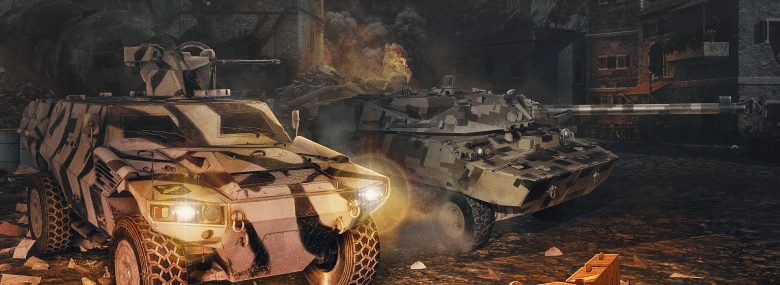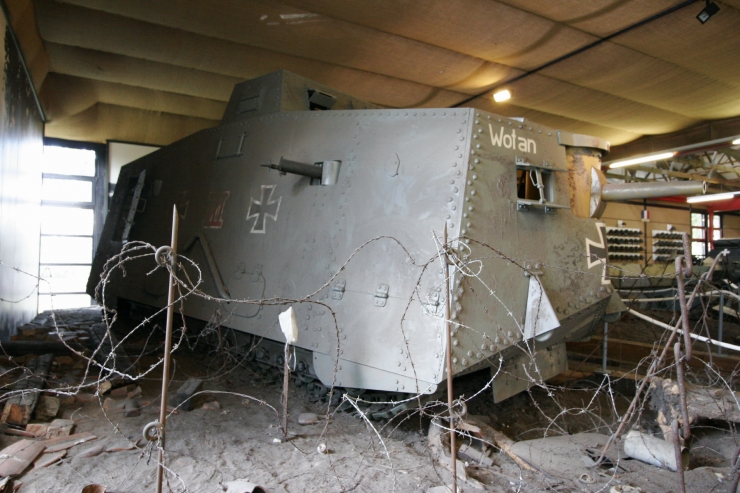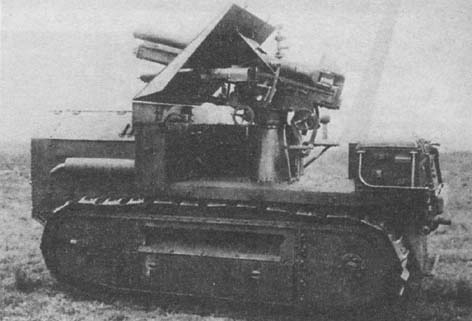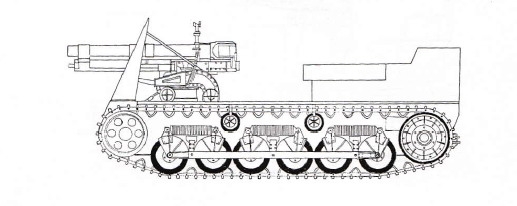
The history of German armor development is long and convoluted and impossible to describe in detail in just a few articles – after all, many books have been written on the very same topic. One thing however is certain: German armor development was possibly the most influential in the world on the creation of modern armor concepts and tactics.
The horrors of the Great War and the desire to never again repeat the trench slaughter led to one of the mightiest armies the world has ever seen and the German armored forces were a large part of the reason behind the early German successes of the Second World War.
Just like the other major nations that fought in the First World War, Germany started deploying its first armored design late in the conflict. The first mass-deployed German tank, the A7V, was a crude, unwieldy metal box armed with multiple machineguns. Slow and vulnerable, it was not very successful and by the time the Germans learned the same lessons about needing smaller tanks that the French did, it was already too late and the war was lost.

The Versailles treaty effectively ended – albeit temporarily – all German ambitions to build advanced tanks and the LK and LK II prototype development was (apart from limited transfers to Sweden and Hungary) abandoned. Germany was prohibited from owning or manufacturing advanced weapons (including tanks) for years to come.
Most people think of Heinz Guderian as the "father" of the rebirth of German armored forces but this is not exactly accurate – this process can in fact be attributed to Oswald Lutz. It was Lutz – a Major in 1920 – who started the process – he was an avid tank fan and was in charge of an armored car unit before being joined in 1922 by Guderian as his subordinate. Together, they formed the theory of German tank combat. Foreign officers often laughed at the sight of German troopers with paper boxes pretending to be tanks during tactics training – twenty years later, however, nobody was laughing anymore as these two men taught the world to tremble once again before German firepower. It is a historical injustice that Guderian is often considered to be the only figure behind the German development while Lutz is all but forgotten. Oswald Lutz retired from active duty in 1938 and after a short period of service in the Wehrmacht from 1941 to early 1942, he died of a protracted disease in 1944 in Munich.
The interwar German armor development would not have been possible (or at least it would have been much more difficult) without the help of Germany's ally. The Soviet Union and Germany signed the Rapallo treaty in 1922 and they remained allies until 1941. A part of the abovementioned treaty allowed Germany to use certain Soviet military facilities, including the Kama tank school near Kazan. It stayed operational until 1933 and it was there that German officers trained to become the core of the nascent Panzertruppe (German armored forces).
Early interwar designs
Well-known early German designs such as the Panzer I or Panzer II are often remembered but there were attempts to build armored vehicles before them and those are unfortunately sometimes forgotten. The pre-war development chain was broken when Joseph Vollmer, the designer of the First World War German vehicles (the A7V and the LK) left Germany and started working with Škoda (Czechoslovakia) on a wheel-cum-track suspension for early Škoda tank prototypes (known as Kolohousenka). He later returned to Germany but did not significantly participate in any further armor development. Vollmer was a prolific inventor – by the time he passed away in 1955, he had around 450 patents registered to his name.
German attempts to create their first serious tanks in the 20s – the Grosstraktor and the Leichttraktor are well-documented (they were referred to as "tractors" since Germany was still officially forbidden to develop its own armor, a policy which only changed in 1935) but there was other – less known – development going on as well. Some of the more obscure vehicles that appeared included various attempts to create self-propelled guns (usually by using a tractor chassis).
One of these was the W.D. Schlepper mit 7,7cm Feldkanone 96 project from 1927. It was basically just the W.D. artillery tractor (produced by Hanomag) on which an obsolete 77mm light field gun was mounted. It was by no means effective, provided no protection for the crew and its maximum speed was 6km/h. Only one prototype was built and tested in Kama.

There was another such attempt by Krupp in 1928. It was called Krupp L.S.K. and it was supposed to be a light tractor chassis with a short 75mm field gun mounted on top of it. The crew was – again – protected only by a rather thin gun shield. One prototype was built in 1930 and was tested between 1931 and 1933, with generally negative results.

Despite these setbacks, German armor development continued and the more successful Panzer I and Panzer II vehicles appeared. Panzer I was not really a light tank but more of a tankette and the Panzer II – although it was a more advanced design – was still inferior to tanks from other countries. Both of these vehicles were the mainstay of German forces in 1939 and 1940 before the arrival of larger numbers of the heavier Panzer III and Panzer IV medium tanks.
The image of the superiority of German armor technology in the 1939 Polish campaign and the 1940 French campaign is actually a myth to a certain degree. It is true that the German units were adequately trained - apart from the Waffen SS units that were known for their notoriously poor performance: the "Waffen SS superiority" is another popular myth, SS units ranged from very few truly excellent to (many) absolutely useless ones, especially early and late in the war. What really pushed the German war plans ahead was not their own economy (in 1938-1939, Germany was practically broke) but the fact that after the Munich betrayal and the occupation of Czechoslovakia, the Wehrmacht got their hands on the entire range of equipment of one of the most advanced armies on the continent – including hundreds of tanks that were superior to both Panzer I and Panzer II. Czechoslovak equipment was integrated into the German army and contributed significantly to the success of the Polish and French campaigns.
In Poland and France, Germany also won due to its innovative use of armor. Unlike other countries that used the tanks primarily as support (attached to various infantry or cavalry units), Germany used infantry to support the mailed fist of the Panzer divisions with the forward thrusts being performed by fast tank formations and with mechanized infantry and bombers providing support. This idea was, naturally, not exclusive to the Germans – many (if not all) advanced countries had their advocates of this form of mechanized warfare. The difference was that in other countries these advocates lost and in Germany, they (specifically Lutz and Guderian) won. The British as well, for example, experimented very early on with mobile, mechanized warfare – the name that should be mentioned here is Sir Basil Henry Liddell Hart, a British military theorist. It is said that it was Liddell Hart's theory that influenced Guderian's tactics but whether that is really true and to what extent is not very clear.

The early German opponents – the Polish and the French – fell rather quickly due to the particular circumstances of each campaign but – contrary to popular opinion – German victories were not cheap: over 220 thousand Germans were killed or wounded by the time the French surrendered and in France alone Germany lost around 800 tanks. Nevertheless, the French campaign, especially, caused a huge shock. Until 1940, France was considered a military superpower – it had won the Great War two decades before and for its army to fall so quickly was completely unthinkable. In this way, German armor tactics influenced the entire world with strategists looking for ways to deal with the Blitzkrieg tactics of massed armored assaults. Some were successful, some less so. For example the American tank destroyer doctrine was less than successful – on the other hand, just like the Germans two decades before them, the Americans too had to create new tactics mostly from scratch and to build a dedicated tank destroyer force to be deployed against the German armored columns actually required some very creative thinking. After the fall of France and the failure to bring Britain to its knees by massed bomber strikes, the Germans turned their sights towards the vast plains of Russia.
All in all, the German army (armor included) was a competent body (with some exceptions) throughout the first half of the war and Germany's production system worked relatively well (until roughly 1942-1943 when it started breaking down due to political meddling and under wartime requirements).
The Germans were neither the super-soldiers some authors try to portray them as, nor were they incompetent as others would have us believe. The truth about German warfare became a victim to the myth of the Third Reich, which has fascinated people ever since the war’s end and will continue to do so for decades to come, even though the reality was – as it usually is – far more sober. Join us in the following article where we further explore some of the myths associated with the German military.






